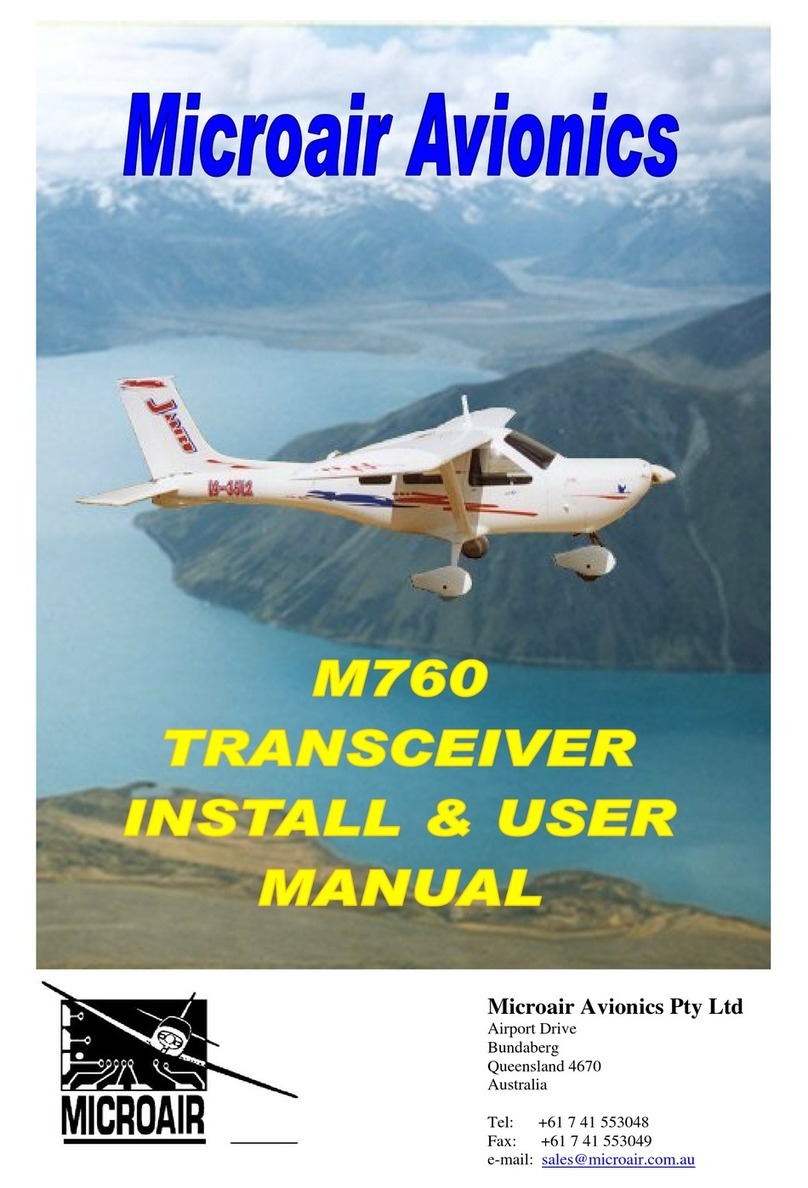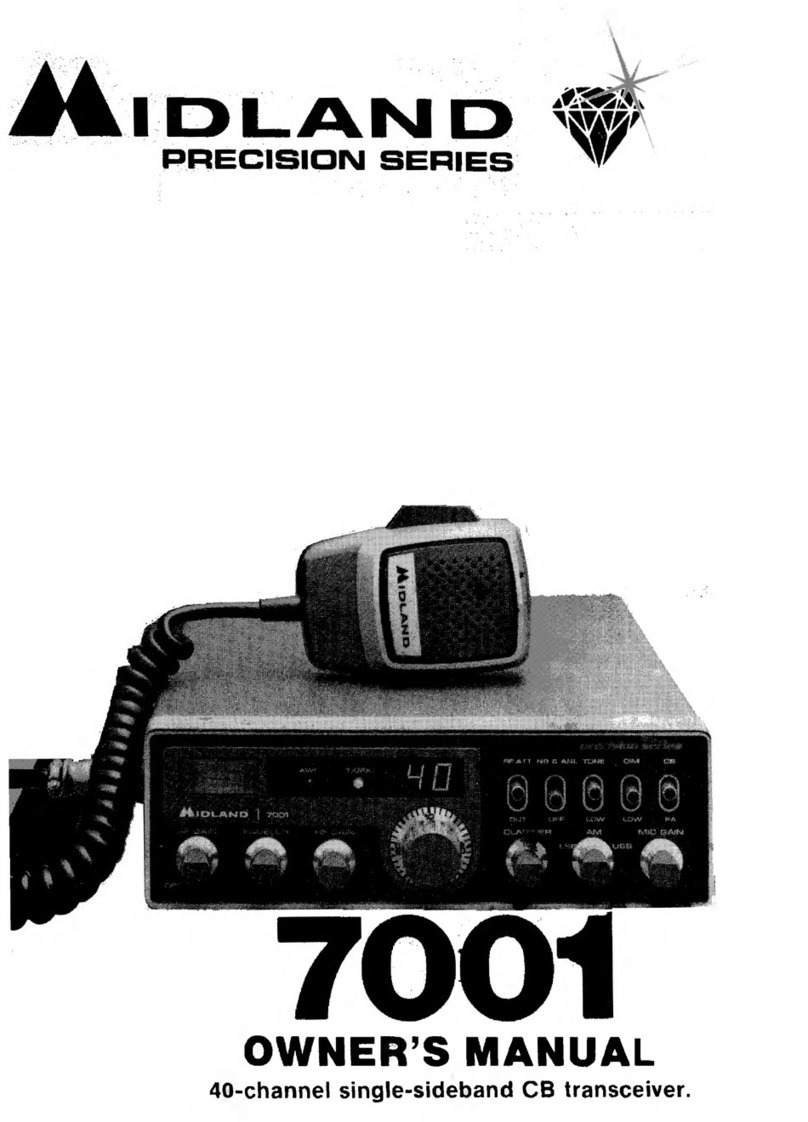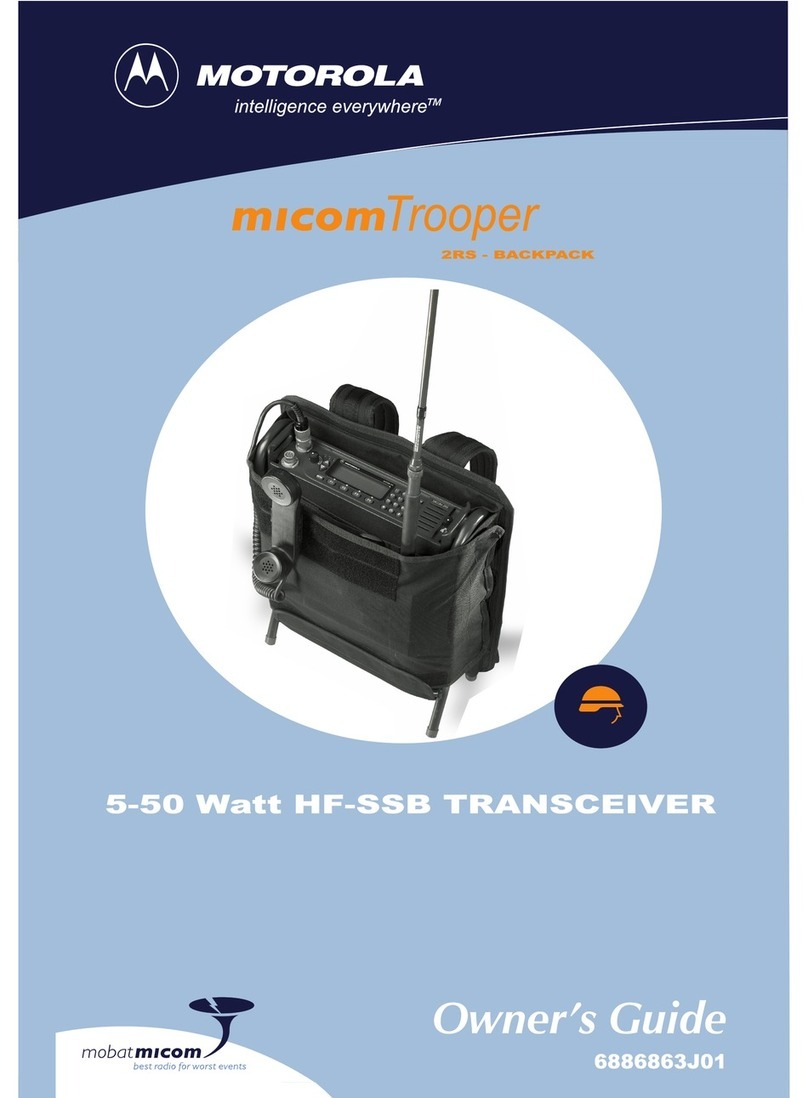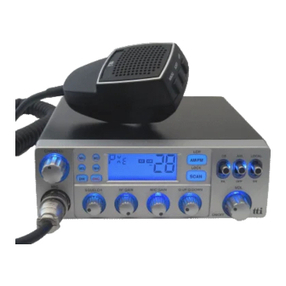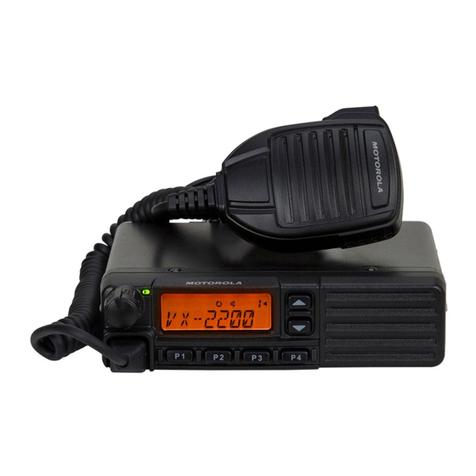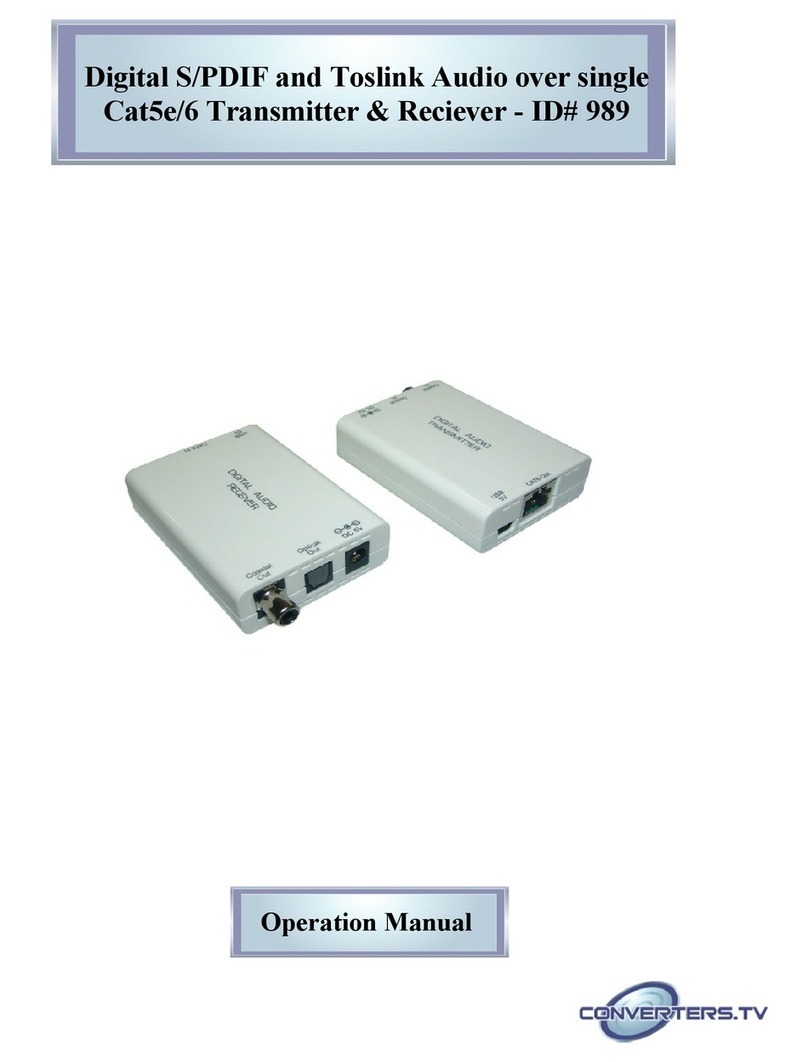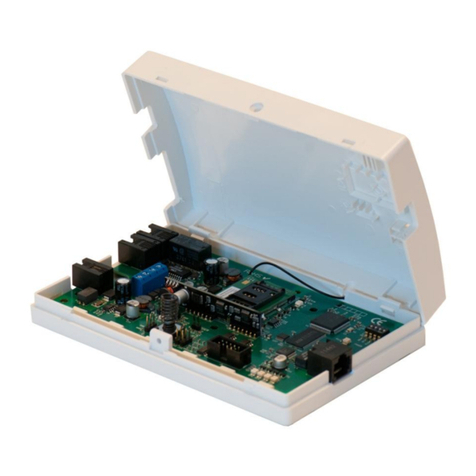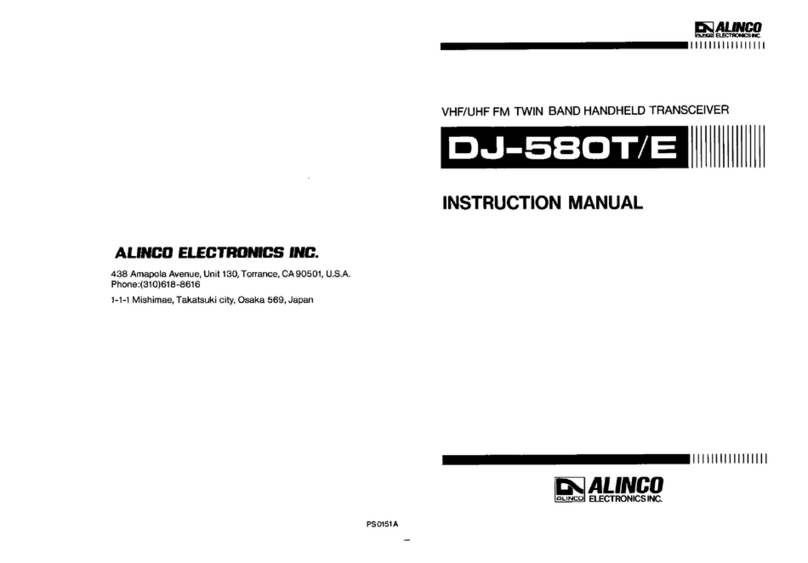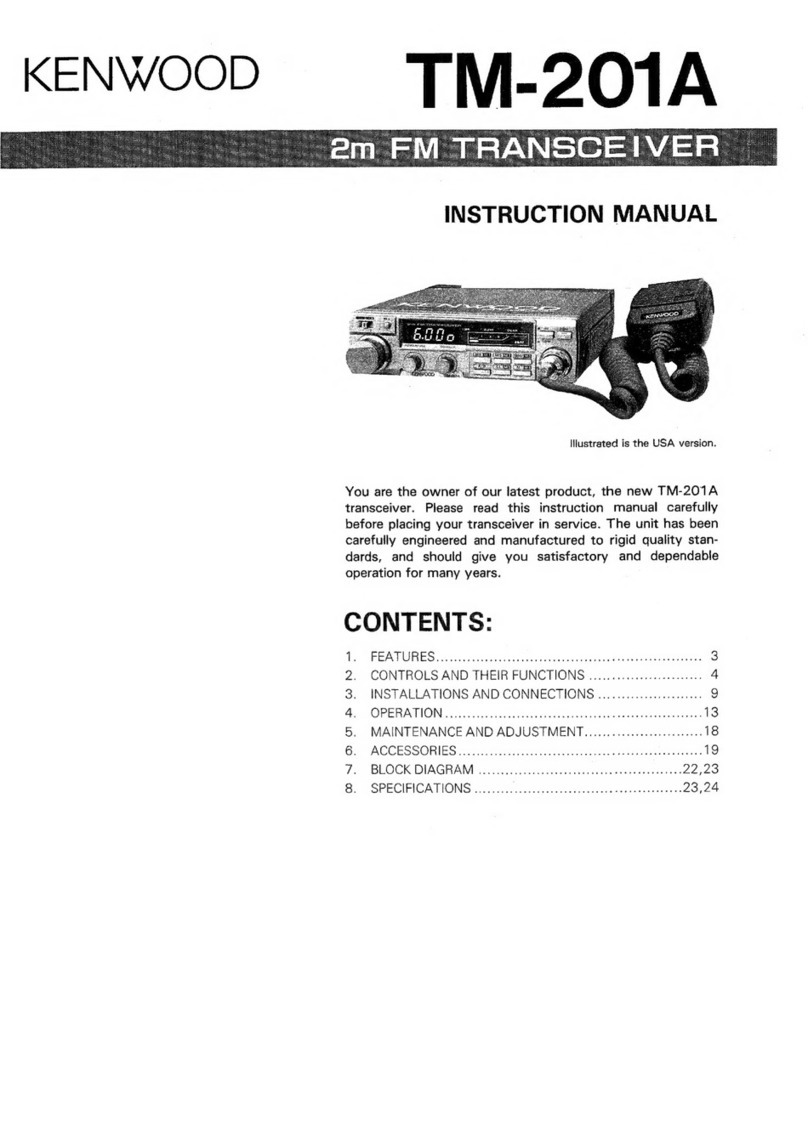MicroAir Avionics M760 User manual

Microair Avionics Pty Ltd
Airport Drive
Bundaberg
Queensland 4670
Australia
Tel: +61 7 41 553048
Fax: +61 7 41 553049
e-mail: sales@microair.com.au

Microair Avionics M760 Transceiver Installation & User Manual
760 install & user manual ver N Page 2 of 24 8
th
December 2003
About This Document
This manual describes the various installation configurations
available for the Microair M760 Transceiver. The
Transceiver’s controls and design features are described and
illustrated.
Microair reserves the right to amend this manual as required,
to reflect any enhancements or upgrades to the M760
Transceiver.
© Microair Avionics Pty Ltd
MICROAIR M760 ACCESSORIES
Wiring Harness
Boom Microphone
Speaker Box
Dynamic Microphone Amplifier
CURRENT REVISION STATUS
Revision Date Change
K 31/01/2000 Initial release
L 18/11/2001 Additional install data and wiring diagram added
M 04/10/2002 Additional wiring diagram added
N 08/12/03 Updated for revision N

Microair Avionics M760 Transceiver Installation & User Manual
760 install & user manual ver N Page 3 of 24 8
th
December 2003
Table of Contents
1.0
Introduction 4
2.0
Unpacking 4
2.1
User / Install Manual 4
2.2
Warranty Card 4
2.3
Authorised Release Certificate 4
3.0
Description 5
4.0
Installation 6
4.1
Physical Installation 6
4.2
Electrical Installation 7
4.3
Coax Termination 8
4.4
Antenna 8
4.4.1
Metal Skin Airframes 9
4.4.2
Non-Metal Skin Airframes 9
4.5
Backlighting 9
4.6
Power Savings 9
4.7
Microphone 10
4.8
Speaker 10
4.9
Intercom 11
4.9.1
Sidetone 11
4.9.2
Mic Gain 11
5.0
Control Functions 12
5.1
Priority Switch 12
5.2
Volume / Squelch Knob 12
5.3
Annunciator LED 12
5.4
Mode Switch 13
5.4.1
Toggle mode 13
5.4.2
Memory Mode 13
5.4.3
Program Mode 13
5.4.4
Scan Mode 13
5.5
Frequency Adjust Knob 14
5.6
Toggle Switch 14
6.0
Memory Programming 15
7.0
Operation 16
7.1
Remote Memory Button 16
8.0
Appendix A –Wiring Diagrams 17
9.0
Appendix B - Specifications 21
10.0
Appendix C – Drilling Template 22
11.0
Limited Warranty 23

Microair Avionics M760 Transceiver Installation & User Manual
760 install & user manual ver N Page 4 of 24 8
th
December 2003
1.0 Introduction
Thank you for purchasing this Microair product. The M760 is a 760 channel VHF aircraft transceiver, packaged
to fit a standard 57mm (2 ¼”) instrument hole. The M760 has been produced in accordance with CASA APMA
approval E2000-004.
2.0 Unpacking
The M760 is boxed in polystyrene for physical protection, and wrapped in an anti-static bag for electrical
protection. Once the box is opened and the radio unwrapped, the owner is responsible for physical and
electrical protection.
Enclosed with the radio are: User / Install Manual
Warranty Card
CASA form 1 – release certificate
DB15 solder plug and backshell
2.1 User / Install Manual
Please read this manual completely before attempting to install or operate this radio. There are several
installation options you may wish to consider, which are clearly laid out in the installation section.
The M760 has all of the basic radio operations, and many other management and programming options,
which are described in the operation and memory sections of this manual.
2.2 Warranty Card
Please complete the warranty card and post it back to Microair. The obvious benefit is to ensure your 12
month warranty is recognised (refer to the limited liability warranty statement on the back cover of this
manual).
Another benefit of returning the card is, it allows Microair to send you service data directly, should the
need arise. Microair monitors all feedback on its products. Should the need arise to alert or advise
customers of a potential problem, good installation ideas, or things to avoid, Microair will despatch a
service bulletin to the customer address list on file.
2.3 Authorised Release Certificate
The CASA form 1 – release note is an internationally recognised document which clearly identifies the
part/component the form 1 is associated with. Please keep this certificate with the aircraft’s file or log
book.

Microair Avionics M760 Transceiver Installation & User Manual
760 install & user manual ver N Page 5 of 24 8
th
December 2003
3.0 Description
The M760 VHF Transceiver has a 57mm (2 ¼”) round face to fit a standard small instrument hole. The case is
59mm high x 65mm wide x 135mm long.
Front Face Rear Face
ITEM CONTROL DESCRIPTION
1 M4 Machine Screw
2 Priority Switch Momentary push down switch
3 Volume / On / Squelch Click On - Rotate knob for volume
Rotate ring for squelch
4 Receiver / Transmit Annunciator Red / Green LED
5 Mode Switch Momentary push down switch
6 Frequency Adjust Rotate for MHZ adjust
Push briefly to change to KHZ
Rotate for KHZ adjust
7 Toggle Switch Momentary push down switch
8 DB15 Connector Push in fit with lock nuts
9 BNC Coaxial Connector
10 LCD Display Two lines of eight characters each

Microair Avionics M760 Transceiver Installation & User Manual
760 install & user manual ver N Page 6 of 24 8
th
December 2003
4.0 Installation
4.1 Physical Installation
The M760 is very simple to physically install in an aircraft’s instrument panel. Select or cut a 57mm (2
¼”) instrument hole for mounting. Present the M760 to the rear face of this hole. The stepped round face
will insert through the hole, and should appear flush with the front of the instrument panel when correctly
positioned. Rotate the M760 to align the four M4 machine screws.
For installations where the existing instrument panel screw holes are 1/8”, the hole will need to be
enlarged to 5/32” to fit the M4 machine screws.
Insert and tighten all four M4 machine screws. The M760 requires no rear support, the M4 screws
provide all of the physical mounting required.
M4 MACHINE SCREWS
57MM (2 1/4") INSTRUMENT HOLE
MIC GAIN TRIM POT
SIDETONE TRIM POT
NO REAR SUPPORT REQUIRED
MICROAIR MA-760
PANEL INSTALLATION
DB-15 CONNECTOR
WIRING HARNESS
50 OHM
COAX
BNC CONNECTOR
The M760 should be located in the aircraft within view of the pilot seated in the pilot-in-command
position, and afford this pilot good access to the front face controls.
Do NOT oversize the mounting holes in the front face of the radio,
to an imperial size. Drilling will damage internal components.
Do NOT replace the M4 machine screws supplied with the radio
with longer screws. Over-length screws will touch or even crush
internal components and cause damage.
Either of these actions will void the warranty

Microair Avionics M760 Transceiver Installation & User Manual
760 install & user manual ver N Page 7 of 24 8
th
December 2003
4.2 Electrical Installation
Microair recommends the use of the wiring in the table below for the various parts of the radio harness:
Line Wire
Power & Ground Tefzel 18 awg wire
Intercom Tefzel 22 awg wire
PTT Tefzel 22 awg wire
Memory Tefzel 22 awg wire
Signal Ground Tefzel 22 awg wire
Speaker Tefzel 22 awg single core shielded
Microphone Tefzel 22 awg single core shielded
Headphone Tefzel 22 awg single core shielded
Aerial RG58C/U 50 ohm Coaxial Cable
All wiring is connected by soldering to the DB15 connector.
Strip the insulation back 2mm (1/16”), and “tin” the exposed conductor with solder. Slide a 5mm length
of 3.2mm (1/16”) heatshrink tubing over the end of the wire. After checking the wiring diagram for the
correct pin number, push the “tinned” end into the terminal, and solder into place. Check the soldered
joint has been made, by gently pulling on the wire. Slide the heatshrink tubing down over the soldered
pin, to completely cover the conductor.
“Tinned” wire Soldered with heatshrink Locking bolts tightened
Cover the soldered joints with the grey plastic backshells. Ensure that the locking bolts are in place
before closing the backshells. Connect to the rear of the radio with a push fit, and secure the locking bolts
(top and bottom).
The M760 can be wired in several different configurations, to suit the various needs. The wiring
diagrams located in Appendix A cover the most commonly used variations.
Microair recommends the use of its pre-wired
M760 harness.
The harness is available from Microair, and
comes complete with all switches, sockets,
buttons, and mounting hardware.
Separate lines have been wired for Pilot and Co-
pilot:
•Headphone
•Microphone
•PTT
•Remote Memory
•Intercom ON/OFF

Microair Avionics M760 Transceiver Installation & User Manual
760 install & user manual ver N Page 8 of 24 8
th
December 2003
BNC Termination
6.5mm
(1/4")
3.2mm
(1/8")
1.6mm (1/16")
Step 1
Step 2
Step 3
Step 4
4.3 Coax Termination
The coax is cut to length and terminated in a BNC connector. Soldered or crimp type connectors are
preferred to the solderless variety, as they have lower signal loss and better shielding.
Microair recommends using only soldered or crimped BNC connectors. Solderless BNC connectors are
NOT recommended, as their performance is not high enough for VHF transmissions.
4.4 Antenna
For certified aircraft the M760 should only be operated with a TSO compliant antenna. The antenna may
be ¼ wave whip or ½ wave dipole, using 50ohm coaxial cable and a BNC connector for connection. The
VSWR should ideally be less than 2:1 across the 118.000MHz to 136.975MHz airband.
For non-certified aircraft using a non-TSO compliant antenna, the VSWR must be checked to ensure the
ratio does NOT exceed 3:1 across the 118.000MHz to 136.975Mhz airband. The M760 will tolerate a
VSWR of 5:1 without injury to the transceiver, but the performance is severely deteriorated.
Do not use the stubbie “rubber duckie” antennas meant for use with handheld radios.
Where the cable length for the coaxial cable exceeds 15m (45 feet), the RG-58C/U cable should be
replaced with RG-213/U cable. At 15m, the RG-58C/U has approx 3dB loss (50% power), where the
RG-213/U has only 1.5dB (75% power). For situations where maximum radio output power is essential,
use only RG-213/U

Microair Avionics M760 Transceiver Installation & User Manual
760 install & user manual ver N Page 9 of 24 8
th
December 2003
4.4.1 Metal Skin Airframes
For metal skin aircraft a ¼ wave whip is the easiest antenna to fit. Ensure that the antenna base and the
coax shield are firmly grounded to the skin of the airframe, on the inside of the aircraft. Ensure that any
anti-corrosion product, which may be used to seal the exterior surface, does not isolate the antenna base
from the airframe. For best performance the whip should be straight and vertical, when mounted on the
airframe.
4.4.2 Non-Metal Skin Airframes
For non-metal airframes, a ¼ wave whip may still be used, but a ground plane must be installed, on the
inside face of the aircraft skin. The ground plane should ideally be circular, and have a diameter of half
the height of the whip. The ground plane should be fabricated from a lightweight metal, eg thin
aluminium sheet, or adhesive foil tape. For best performance the ground plane should be flat and
horizontal, when mounted on the airframe.
An alternative antenna for non-metal airframes is the Ground Plane independent dipole. This antenna is
physically similar to the ¼ wave whip, but has a small stubbie antenna pointing downwards from the
antenna base. The stubbie section of the antenna takes the place of the ground plane, and simplifies
installation.
Beware of fabric surfaces with silver dope finishes. The silver dope is a conductive surface, and with
screen antennas which are mounted internally.
4.5 Backlighting
The backlighting is activated, by taking input supply voltage to pin 8. This line can be individually
switched outside the DB15 connector to enable the backlighting to be turned off.
If the backlighting is wired but not switched, the backlighting will come on when the master switch is
turned on. The aircraft may be started with the radio off, but with the backlighting active, without the
possibility of injury to the radio.
The backlighting line from pin 8 may be taken to a dimmer. The backlighting consists of 4 LED’s behind
the LCD display which operate on 1-14 volts. The backlighting cannot be seen below 3 volts.
4.6 Power Savings
For installations, operating from a battery only, Microair recommends saving battery power by NOT
wiring the backlighting – do NOT wire pin 8. The backlighting will draw an additional 80mA of power.
This nearly doubles the standby power demand.
Not connecting the backlighting can effectively double the running time on your battery.
The operator should remember that the minimum operating voltage is 10 volts. This is the loaded voltage
(ie the voltage when the radio is transmitting). For battery operators, check the battery voltage level, then
press the PTT briefly to note the voltage drop. If the voltage dips by more than 0.5 volts, change the
battery before flying.

Microair Avionics M760 Transceiver Installation & User Manual
760 install & user manual ver N Page 10 of 24 8
th
December 2003
4.7 Microphone
The M760 can be operated with an Electret Insert or Amplified Dynamic microphone. These alternatives
cover most aviation headsets and hand microphones.
When the PTT is pressed both microphones are live. To reduce background noise, the M760 can be
installed with relays across the mic lines and the PTT line, to allow on one microphone at a time to
operate (refer appendix A). This reduces background noise when transmitting.
For operators wanting to use a dynamic microphone, a mic amplifier must be used. Microair recommends
the installation of the Microair MD-01a amplifier. This amp is compatible with 150-600 ohm dynamic
microphones.
4.8 Speaker
Microair recommends using a speaker of 4 ohms
impedance, rated at a minimum of 5 watts.
Microair recommends the SP01 Box Speaker.
The SP01 has a durable thick film plastic cone of
4 ohms, and is rated at 5 watts. The SP01 is fitted
with a mounting bracket, and is supplied with
clips and screws.
Check your speaker choice by ensuring the audio
is clear up to at full volume.
MD-01a
CONNECTOR (RADIO END)
CONNECTOR (MIC END)
CRIMP TERMINALS
MIC SIGNAL LINE
(7-9 VOLTS)
GROUND
LINES TO DYNAMIC MIC
OR MIC JACK

Microair Avionics M760 Transceiver Installation & User Manual
760 install & user manual ver N Page 11 of 24 8
th
December 2003
MICROAIR MA-760
TRIMPOT ADJUSTMENT
Sidetone
Mic Gain
Caution
No user parts inside
Do not open case
Do not make any unauthorised
adjustments
Reverse polarity will cause
damage and void warranty
Mod status
1 3 4 5 7 8 9 10
26
INCREASE
DECREASE
STRAIGHT BLADE SCREWDRIVER
WITH INSULATED SHAFT
NOTE
TOTAL TRIMPOT MOVEMENT IS 270 DEGREES ROTATION
4.9 Intercom
The M760 utilises the sidetone facility, to produce a “hot mic” intercom. This means the mic’s are “live”
at all times, to the pre-set levels of the sidetone and the mic gain. Both pilot and co-pilot can speak and
be heard at all times. Hot mic operation is not a VOX system where the mic’s only come on when a pre-
set noise threshold is reached (ie when you speak the mic comes on).
It is therefore important to ensure that the sidetone and mic gain are set to the correct levels, so that the
mic’s do not pick up large amounts of ambient noise. The sidetone and mic gain are pre-set in the factory
to levels which should suit most general aviation needs. Microair recommends that mic-muffs be fitted to
all microphones, as a principal way of reducing the pick up of ambient noise.
The intercom facility is enabled by grounding pin 5. This can be done via a switch to turn the intercom
on and off. If, after installing, and trying the intercom, there is too much background (ambient) noise, re-
set the sidetone and the mic gain in the following way:
4.9.1 Sidetone
1. Connect headset(s) to the radio
2. Turn down headset volume to minimum
3. Close sidetone trim pot by turning fully counter clockwise
4. Speak into microphone with a constant “Laaaa” tone, and increase the sidetone by turning clockwise
5. Stop when good volume is heard. Test this level with the headset volume to maximum
4.9.2 Mic Gain
1. Connect headset(s) to the radio
2. Start engine, and listen to ambient noise
3. If ambient noise is too high, turn down mic gain with a SMALL counter clockwise turn
4. When the noise is down to an acceptable level, make a test transmission to another radio
5. If the audio quality of the transmission is too weak, the mic gain must be increased
Please refer to the figure below to see how the trim pots are adjusted. The trim pots have a total
movement of only 270 degrees (3/4 turn). The heads of the trim pots are plastic, and can be distorted or
broken off unless adjusted with great care. A small straight blade screwdriver with an insulated shaft is
required. Ensure the radio is turned off before punching the hole under the black dot, and probing for the
slot in the head of the trim pot. Once the screwdriver is engaged on the trim pot, the radio can be turned
on, and the adjustment made.
Do not attempt to adjust the modulation or power output. These
adjustments can only be set correctly by a qualified technician.
Adjustment of the power output or modulation by anyone other
than Microair or their approved agent will void the warranty.

Microair Avionics M760 Transceiver Installation & User Manual
760 install & user manual ver N Page 12 of 24 8
th
December 2003
5.0 Control Functions
5.1 Priority Switch
The priority switch is a push down switch. When pushed down briefly, the radio will go into memory
mode, and select the frequency stored in memory 25. Memory 25 should be considered the priority
channel, which the user can quickly select when required. Memory 25 must be programmed for the
priority switch to operate. Memory 25 is set at the factory as the international distress frequency
121.500MHz. Memory 25 can be programmed the same way as any of the other channels (refer memory
programming), hence the factory default can be edited.
5.2 Volume / Squelch Knob
The M760 is turned on, by rotating the volume knob. A positive “click” is heard and felt at the start of
the rotation to indicate the on/off position. The volume is increased by rotating the knob clockwise, and
decreased by rotating counter clockwise.
The squelch is adjusted by rotating the ring behind the volume knob. There is no automatic level set for
the squelch, however the ring affords a large manual adjustment to suit all situations. Rotate the ring
clockwise to increase the squelch threshold, and counter clockwise to lower the threshold. When the
squelch is “broken” (ie the static hiss can be heard), the annunciator LED lights green.
Note: This does NOT mean you are receiving a signal!
5.3 Annunciator LED
The LED operates red or green, and indicates the following states:
Clear (off) Radio is squelched above the threshold, and is not receiving a signal
Green Squelch is broken or a signal is received
Red Radio is transmitting
Flashing Red Radio has transmitted for over 40 seconds (warning)
The flashing red signal may draw the user’s attention to the fact that the aircraft may have a stuck PTT
button! Transmissions in excess of 30 seconds should be avoided.

Microair Avionics M760 Transceiver Installation & User Manual
760 install & user manual ver N Page 13 of 24 8
th
December 2003
5.4 Mode Switch
The mode switch is a push down switch. When pushed down briefly the radio will step to the next
operating mode. The M760 has four operating modes:
5.4.1 Toggle mode
The display shows the active or in use frequency on the top line. The standby frequency is
displayed on the bottom line.
5.4.2 Memory Mode
The top line displays the memory or MEM number, and the lower line displays the frequency for
that memory. The displayed memory becomes the frequency the moment it is displayed. The user
can scroll through the programmed memories by rotating the frequency adjust knob, or by
pressing the remote memory button.
5.4.3 Program Mode
The MEM is replaced with PROG on the top line. The frequency stored in each memory can be
set, changed, or cleared in this mode (refer memory programming).
5.4.4 Scan Mode
By holding down the toggle switch for 3 seconds, the M760 goes into scan mode. The
programmed memories are cycled quickly across the display. The M760 checks each memory in
turn for any signal. If there is no signal the radio moves to the next programmed memory. When a
signal is detected, the scan locks to that memory to receive the signal. This memory is held for 10
seconds after the signal finishes to afford the user an opportunity to reply on that memory channel.
The user can stop the scan operation by pressing down briefly the toggle key, or the PTT button.

Microair Avionics M760 Transceiver Installation & User Manual
760 install & user manual ver N Page 14 of 24 8
th
December 2003
5.5 Frequency Adjust Knob
The standby frequency can be changed by scrolling the frequency adjust knob. Rotate knob to scroll the
MHz half of the standby frequency. Press the knob in briefly to move the cursor to the KHz half of the
standby frequency. Rotate the knob again to scroll the KHz. The cursor will remain where it was lasted
toggled.
Only the standby frequency can be changed directly, the active frequency cannot be directly altered by
the frequency adjust knob.
5.6 Toggle Switch
The toggle switch is a push down switch. When pushed down briefly, the active and standby frequencies
exchange places. Hold the toggle key down for 3 seconds to activate the scan function.
Cursor
MHz KHz

Microair Avionics M760 Transceiver Installation & User Manual
760 install & user manual ver N Page 15 of 24 8
th
December 2003
6.0 Memory Programming
The M760 has 25 programmable memories, for storing commonly used frequencies.
Use the mode switch to move the display to the program mode. The word PROG will appear on the top
line, with the memory number on the right hand side. On the lower line is the currently stored frequency
in that memory.
The cursor can be cycled through the MHz, KHz, and memory number by pressing the frequency adjust
knob.
Move the cursor to the memory number and select the memory number for programming, by rotating the
frequency adjust knob.
Press the frequency adjust knob to move to the MHz section. Rotate the frequency adjust knob to scroll
to the desired value.
Press the frequency adjust knob to move to the KHz section. Rotate the frequency adjust knob to scroll to
the desired value.
With the memory number, and frequency set to the correct values, press down the toggle switch briefly.
The word STORE appears briefly on the top line.
To clear a memory, scroll to the desired memory, and press down the priority switch briefly. The word
CLEAR appears on the top line.
The user can now move to another memory for programming. Press the frequency adjust knob to move
the cursor back to the memory number, and scroll to next memory for programming.
When all programming is complete, press the mode switch to move on from the program mode, back to
the active/standby toggle display.
When operating in memory mode, the programmed channels can be scrolled through, by rotating the
frequency adjust knob, or by pressing the remote memory button. Only programmed memories are
displayed.
Operating the priority switch in either toggle or memory mode will move the M760 to memory 25. The
user should consider carefully what frequency to program in memory 25. The factory default is the
distress frequency 121.500MHz.
Cycle cursor between program number, MHz, and
KHz, by pressing the frequency adjust knob
inwards briefly. Rotate the frequency adjust knob
to change value.

Microair Avionics M760 Transceiver Installation & User Manual
760 install & user manual ver N Page 16 of 24 8
th
December 2003
7.0 Operation
The M760 should always be turned off, before starting the aircraft to protect the radio from transient
voltages. After starting, the radio can be turned on, and the squelch adjusted so the static hiss can be
heard through the headphones. The LED annunciator will light green while the hiss is heard. Use the hiss
tone to adjust the volume to an appropriate level. With the volume set, turn the squelch ring to break the
squelch and eliminate the hiss. The LED annunciator light will go clear.
It may be necessary to readjust the squelch with the engine at full power, as the ignition noise increases
dramatically.
The intercom volume is pre-set, and not affected by the volume knob (refer Intercom section on page10).
The M760 can now be adjusted to the correct active and standby frequencies, by scrolling and pressing
the frequency adjust knob.
The M760 will transmit when the PTT button is held down. The LED annunciator will light red. When
transmitting the user will hear themselves speaking through their own headphones via the sidetone
system. If the transmission lasts longer than 40 seconds, either because you have a lot to say, or because
the PTT has stuck, the LED annunciator will flash red. When this happens, check the PTT immediately.
If you find no obvious fault, turn the radio off, and then on again. If the LED is still red, turn the radio off
and leave it off.
7.1 Remote Memory Button
If fitted at installation, the remote memory button will allow the user to toggle (exchange) the active and
standby frequencies. The remote memory button is typically mounted next to the PTT on the stick.
If the user elects to operate in memory mode, the remote memory button will step through the
programmed memories.
If the Remote memory button is held down for 5 seconds, the M760 will go into scan mode, and
automatically scroll through the programmed memories, searching for a signal.
To terminate the scan operation, the PTT is pressed briefly.
The remote memory button is highly recommended. It allows the
user to be able to keep hands on the controls during flight, while
changing channels or scanning.

Microair Avionics M760 Transceiver Installation & User Manual
760 install & user manual ver N Page 17 of 24 8
th
December 2003
8.0 Appendix A –Wiring Diagrams
Standard Wiring Includes remote memory, intercom, and backlighting switches,
along with cabin speaker.
PTT Operation Include a mode switch to allow the PTT button to be used for either
transmit or intercom
PTT Relay Operation Includes the use of two relays across both mic ines and the PTT line
to allow only one microphone at a time to operate

Microair Avionics M760 Transceiver Installation & User Manual
760 install & user manual ver N Page 18 of 24 8
th
December 2003
MICROAIR M760 (REV N) TRANSCEIVER
WIRING DIAGRAM
CO-PILOT HEADPHONES
PILOT MICROPHONE
PILOT HEADPHONES
CO-PILOT MICROPHONE
CO-PILOT PTT
PILOT PTT
MICROPHONE
NOT WIRED
MICROPHONE
NOT WIRED
INTERCOM
NOT WIRED
PTT
LED BACKLIGHTING
+ 10-16 VOLTS IN
+ 10-16 VOLTS IN
GROUND
GROUND
REMOTE MEMORY
HEADPHONE
SPEAKER
1
2
3
4
5
6
7
8
9
10
11
12
13
14
15
CABIN SPEAKER
1 8
9 15
DB-15 CONNECTOR
VIEWED FOR THE SIDE THE
MICROPHONE
MICROPHONE
INTERCOM ON/OFF SWITCH
BACKLIGHTING ON/OFF SWITCH
REMOTE MEMORY BUTTON
NOTES
1.
2.
3.
4.
5.
6.
THE PTT AND REMOTE MEMORY BUTTON ARE TO BE MOMENTARY ON IN THEIR ACTION.
THE SPEAKER CAN BE EITHER 4 OR 8 OHM, BUT SHOULD BE MINIMUM 5 WATTS.
POWER FUSING SHOULD BE MINIMUM 3 AMP, AND NOT GREATER THAN 10 AMP.
DYNAMIC MICROPHONES WILL REQUIRE THE MD-01A AMPLIFIER TO CORRECT OPERATION.
THE INTERCOM AND BACKLIGHTING SWITCHES ARE SPST ON/OFF SWITCHES.
WARNING - REVERSE POLARITY OR OVERVOLTAGE WILL INJURE THE M760 AND VOID THE WARRANTY.
MA-760 DB-15 CONNECTION
+ 10-16 VOLTS IN
GROUND
3 AMP
STANDARD INSTALLATION
WIRES ARE SOLDERED TO
MUSIC GROUND
MUSIC SIGNAL
7. MUSIC AUDIO MAY BE WIRED IN PARALLEL WITH THE HEADPHONE AUDIO.
THE MUSIC SIGNAL LEVEL SHOULD BE TYPICALLY 100mW @ 600 OHMS.
GROUND
MEMORY
HEADPHONE
SPEAKER
REMOTE MEMORY BUTTON

Microair Avionics M760 Transceiver Installation & User Manual
760 install & user manual ver N Page 19 of 24 8
th
December 2003
MICROAIR M760 (REV N) TRANSCEIVER
WIRING DIAGRAM
CO-PILOT HEADPHONES
PILOT MICROPHONE
PILOT HEADPHONES
CO-PILOT MICROPHONE
CO-PILOT PTT
CO-PILOT INTERCOM
MICROPHONE
NOT WIRED
MICROPHONE
NOT WIRED
INTERCOM
NOT WIRED
PTT
LED BACKLIGHTING
+ 10-16 VOLTS IN
+ 10-16 VOLTS IN
GROUND
GROUND
REMOTE MEMORY
HEADPHONE
SPEAKER
1
2
3
4
5
6
7
8
9
10
11
12
13
14
15
CABIN SPEAKER
1 8
9 15
DB-15 CONNECTOR
VIEWED FOR THE SIDE THE
MICROPHONE
MICROPHONE
INTERCOM ON/OFF SWITCH
BACKLIGHTING ON/OFF SWITCH
PIOLT PTT
NOTES
1.
2.
3.
4.
5.
6.
THE PTT AND REMOTE MEMORY BUTTON ARE TO BE MOMENTARY ON IN THEIR ACTION.
THE SPEAKER CAN BE EITHER 4 OR 8 OHM, BUT SHOULD BE MINIMUM 5 WATTS.
POWER FUSING SHOULD BE MINIMUM 3 AMP, AND NOT GREATER THAN 10 AMP.
DYNAMIC MICROPHONES WILL REQUIRE THE MD-01A AMPLIFIER TO CORRECT OPERATION.
THE INTERCOM AND BACKLIGHTING SWITCHES ARE SPST ON/OFF SWITCHES.
WARNING - REVERSE POLARITY OR OVERVOLTAGE WILL INJURE THE M760 AND VOID THE WARRANTY.
MA-760 DB-15 CONNECTION
+ 10-16 VOLTS IN
GROUND
3 AMP
PTT OPERATION FOR TRANSMIT AND INTERCOM
WIRES ARE SOLDERED TO
MUSIC GROUND
MUSIC SIGNAL
7. MUSIC AUDIO MAY BE WIRED IN PARALLEL WITH THE HEADPHONE AUDIO.
THE MUSIC SIGNAL LEVEL SHOULD BE TYPICALLY 100mW @ 600 OHMS.
GROUND
MEMORY
HEADPHONE
SPEAKER
CO-PILOT MEMORY BUTTON
PILOT INTERCOM
PILOT MEMORY BUTTON

Microair Avionics M760 Transceiver Installation & User Manual
760 install & user manual ver N Page 20 of 24 8
th
December 2003
INTERCOM ON/OFF SWITCH
BACKLIGHTING ON/OFF SWITCH REMOTE MEMORY BUTTON
NOTES
1.
2.
3.
4.
5.
6.
THE PTT AND REMOTE MEMORY BUTTON ARE TO BE MOMENTARY ON IN THEIR ACTION.
THE SPEAKER CAN BE EITHER 4 OR 8 OHM, BUT SHOULD BE MINIMUM 5 WATTS.
POWER FUSING SHOULD BE MINIMUM 3 AMP, AND NOT GREATER THAN 10 AMP.
DYNAMIC MICROPHONES WILL REQUIRE THE MD-01A AMPLIFIER TO CORRECT OPERATION.
THE INTERCOM AND BACKLIGHTING SWITCHES ARE SPST ON/OFF SWITCHES.
WARNING - REVERSE POLARITY OR OVERVOLTAGE WILL INJURE THE M760 AND VOID THE WARRANTY.
MA-760 DB-15 CONNECTION
+ 10-16 VOLTS IN
GROUND
3 AMP
RELAY OPERATION OF PTT'S
WIRES ARE SOLDERED TO
MUSIC GROUND
MUSIC SIGNAL
7. MUSIC AUDIO MAY BE WIRED IN PARALLEL WITH THE HEADPHONE AUDIO.
THE MUSIC SIGNAL LEVEL SHOULD BE TYPICALLY 100mW @ 600 OHMS.
GROUND
MEMORY
HEADPHONE
SPEAKER
PILOT PTT
CO-PILOT PTT
PILOT RELAY
CO-PILOT RELAY
NO
NC
NO
NC
PTT
REMOTE MEMORY BUTTON
MICROAIR M760 (REV N) TRANSCEIVER
WIRING DIAGRAM
CO-PILOT HEADPHONES
PILOT MICROPHONE
PILOT HEADPHONES
CO-PILOT MICROPHONE
MICROPHONE
NOT WIRED
MICROPHONE
NOT WIRED
INTERCOM
NOT WIRED
PTT
LED BACKLIGHTING
+ 10-16 VOLTS IN
+ 10-16 VOLTS IN
GROUND
GROUND
REMOTE MEMORY
HEADPHONE
SPEAKER
1
2
3
4
5
6
7
8
9
10
11
12
13
14
15
CABIN SPEAKER
1 8
9 15
DB-15 CONNECTOR
VIEWED FOR THE SIDE THE
MICROPHONE
MICROPHONE
Other manuals for M760
2
Table of contents
Other MicroAir Avionics Transceiver manuals
Popular Transceiver manuals by other brands

Kenwood
Kenwood TS-670 instruction manual
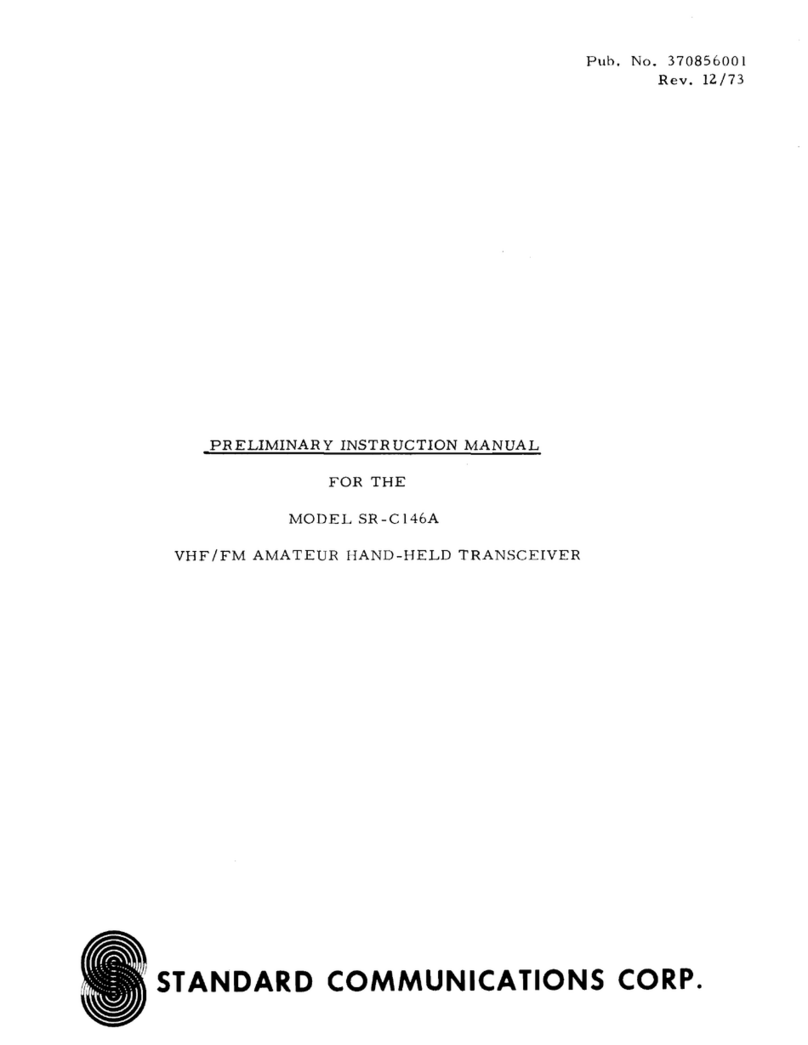
Standard Communications
Standard Communications SC-C146A instruction manual
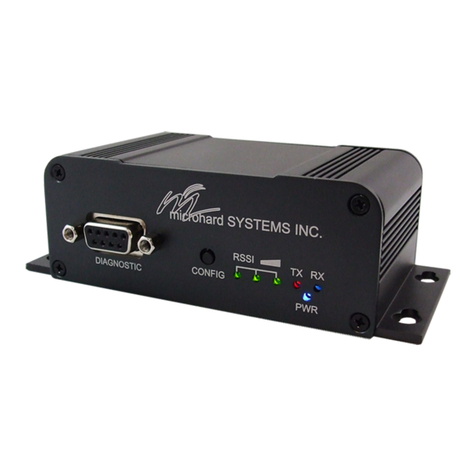
Microhard Systems
Microhard Systems n920X2 operating manual
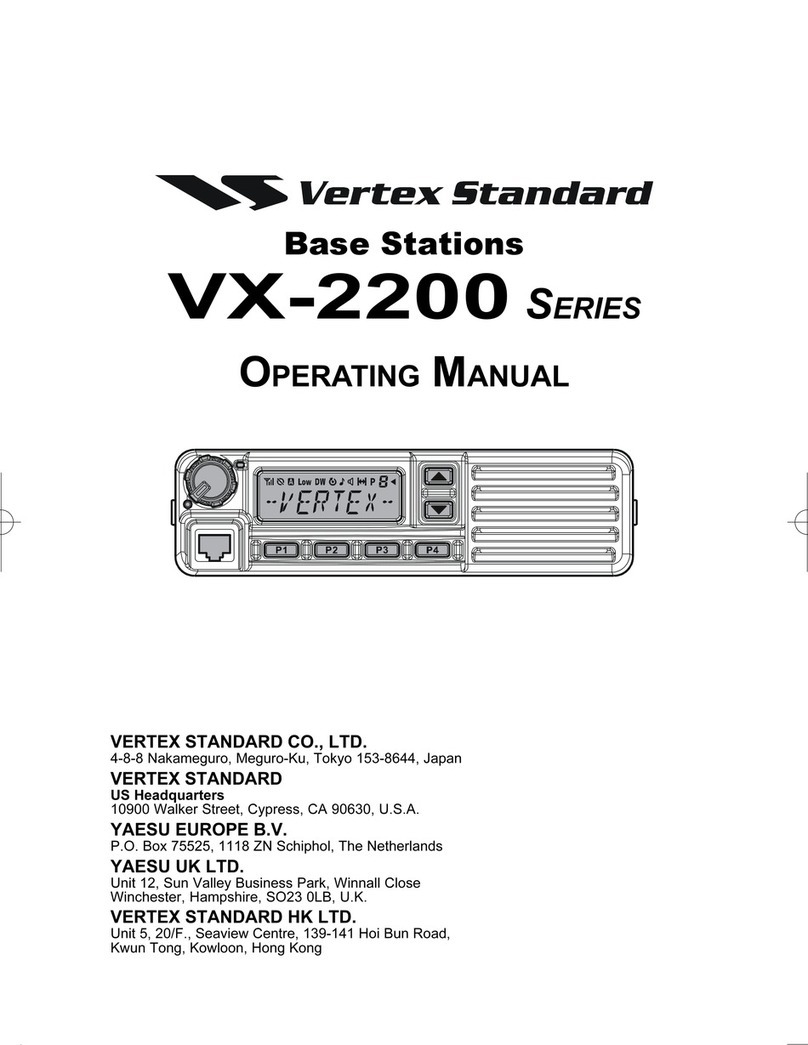
Vertex Standard
Vertex Standard VX-2200 Series operating manual

Kenwood
Kenwood TK-7150 Service manual
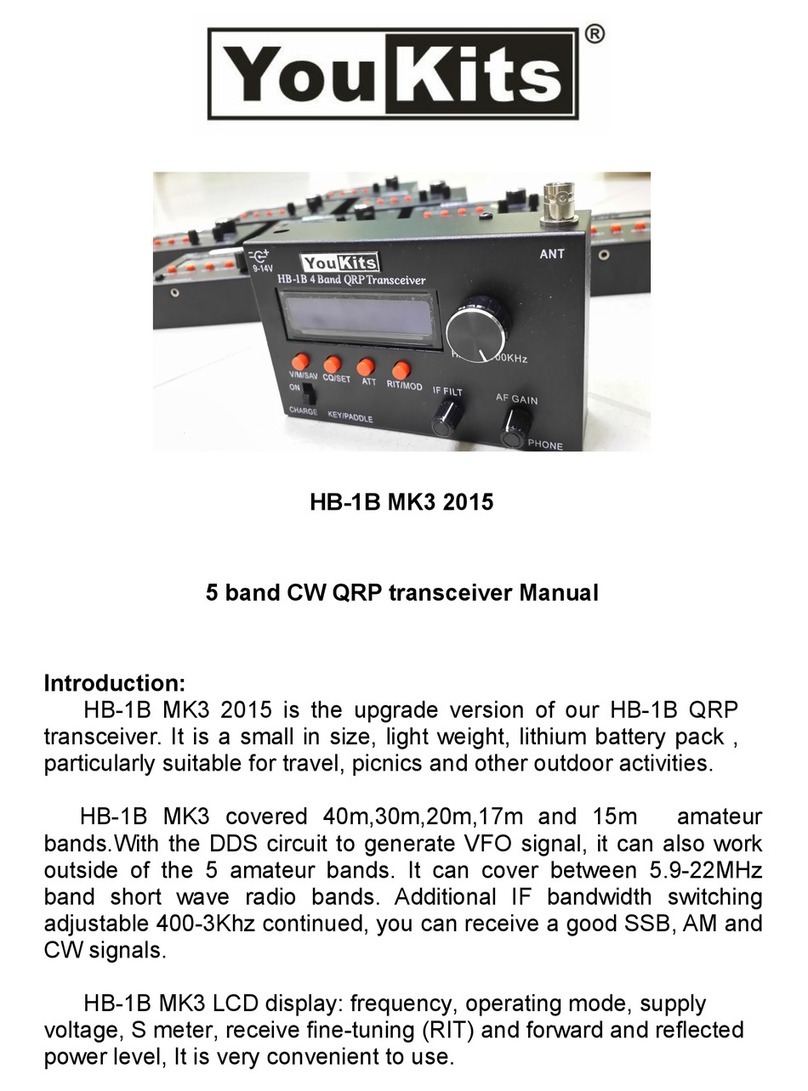
YouKits
YouKits HB-1B MK3 instruction manual

